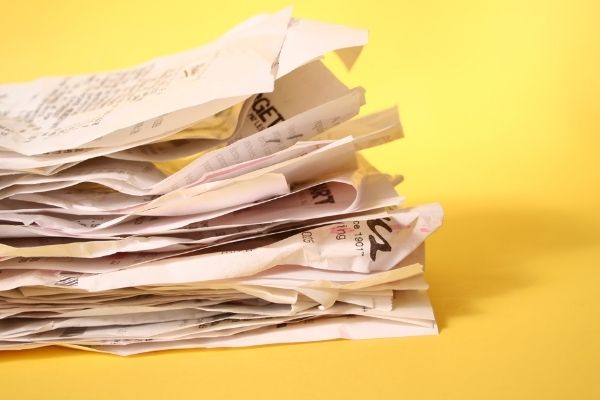Receipts are an important part of our shopping experience. They provide you with proof of purchase or allow you to return an item if it is faulty or you bought the wrong size. Like most of us, you probably end up with receipts filling your wallet or handbag and in all those drawers where you put them for safekeeping.
They seem like a reasonably harmless item, they are small and made of paper. But how much do you really know about receipts? Here are some facts that might surprise you.
- 300 billion paper receipts are produced worldwide every year.
- Over 250 million gallons of oil, 10 million trees, and 1 billion gallons of water are consumed each year to create receipts for the United States.
- The United States generates 1.5 billion pounds of waste from receipts alone.
- Each year, British retailers hand shoppers 11.2 billion paper receipts, the combined weight of over 7.5 million kg (over 7,300 tons) or the equivalent of 87,000 trees.
Want to learn more about receipts, like what they are made of and if receipts are recyclable? Read on, and we will explain it.
What are they made of?
There are two different types of receipts. Some receipts are made of paper, and others are made of plastic and paper. These multilayer receipts made with plastic and paper are referred to as thermal receipts.
Thermal receipts have a coating of the chemical bisphenol-A or BPA. The coated paper is run through a printing machine that uses dot formations to produce the letters and graphics, similar to an old dot matrix printer.
The paper is heated up as it runs through a roller, and the heat causes a chemical reaction to occur where it is focused. This shows the black writing and text that you see.
Are receipts recyclable?
Receipts that are made from 100% paper are completely recyclable and can even be composted. However, the plastic-coated receipts (thermal receipts) are not recyclable.
The trouble is that it’s pretty hard to tell the difference between these two types of receipts. If you were to place the plastic kind in with your paper and cardboard recycling in your curbside bin it would contaminate the recycling.
Because of this, all receipts must go in your landfill bin.
Ways you can help
The best answer is to go paperless. You can either say no when asked if you want a receipt or accept a digital receipt. Many places offer digital recipes these days if you should take advantage of this if you get the chance.
Unfortunately, some places will print the receipt and then ask you. My local supermarket does this. I have contacted them to ask if they could change their processes. Another supermarket nearby has enabled customers to select no receipts in their online account.
Several receipt apps, called digital wallets, allow you to keep track of your receipts if you are not so good at filing them yourself. Finder has a great article describing the pros and cons of digital wallets and the many options available.
The Wrap
The answer to are receipts recyclable is no, they are not. Even though paper receipts are recyclable, it is too hard to work out if you have a paper receipt or a thermal plastic-coated receipt. Unfortunately, they all must go into the trash can.
Now that you are familiar with the impacts of receipts and that they cannot be recycled easily why not consider digital receipts more often. Every little change makes a difference and inspires others to do the same.
Learn more about recycling paper and paper products:
- Can you recycle books?
- Can you recycle shredded paper?
- How to Recycle Paper and Cardboard
- Can you recycle cardboard egg cartons?
Want to know about other everyday items that can be confusing when it comes to recycling? Check out our articles on packing peanuts, milk cartons, and Pringle cans to get you started.
Sources
- Aron Priest, 2013, Inkless Printing – An Explanation Of Direct Thermal Print
- David Jinks, 2018, Study: Stamping Out Receipts,














